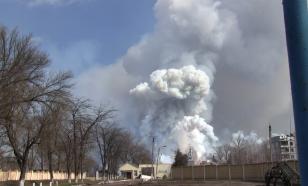Bird flu planning: A prudent idea or overreaction by government?
The interest in bird flu among top White House officials has grown so dramatically over the past 14 months that some lawmakers are questioning whether official Washington is overreacting.
The draft released by President George W. Bush's administration in August 2004 on fighting a potential flu pandemic generated fewer than 50 public comments for the Health and Human Services Department to consider when assembling the final plan, a top agency official said.
By comparison, the Food and Drug Administration reported last week that it received 2,268 comments about whether to make the contraceptive "morning-after pill" available without a prescription.
"I'm not a medical doctor or a public health specialist, and I'm not saying we should do nothing," Congressman John Duncan said Friday at this week's third congressional hearing on bird flu. Democrats and Republicans have held numerous press conferences and congressional hearings to show they are working to protect the U.S. against a potential pandemic.
The administration took two days to roll out its plan last week. The president announced it on one day and on the next, the health secretary gave more details. HHS head Mike Leavitt makes clear during every speech that even if a pandemic does not strike, the investment and planning will be well worth it.
The result, according to Duncan, is that the U.S. is getting ready to spend billions of dollars on medicine that it is not sure will work in a pandemic, and people everywhere are so scared they are hoarding the antiviral medicine Tamiflu, which also may not work.
Duncan raises the issue of whether, in this post-Hurricane Katrina environment, lawmakers are trying to score political points or just doing their best to avoid a repeat of the carnage that can result from being unprepared for a natural disaster.
Leavitt said the investment in vaccine technology called for by the administration would save millions of lives in the long run, even if the bird flu virus never reaches the pandemic stage _ when it spreads from person to person.
The administration wants $7.1 billion (Ђ6 billion) in emergency spending. Democrats have sponsored legislation that calls for $8 billion (Ђ6.7 billion).
Bush's plan would improve systems to detect and contain the next super-flu before it reaches the United States. It also would overhaul the vaccine industry so that scientists eventually could produce enough supply for everyone within months of a pandemic's appearance. A bad pandemic could infect up to one-third of the population and, depending on its virulence, kill between 209,000 and 1.9 million Americans, according to the administration.
Dr. Marc Siegel, associate professor of medicine at the New York University School of Medicine, said he agrees that the threat of a pandemic is serious, but he also believes that the worst-case scenarios overdo it.
Despite his skepticism about the near-term threat, Siegel said he applauded the administration's efforts to enhance vaccine production. The money would be well spent, he said, even if the bird flu never reaches the pandemic phase.
Dr. Bruce Gellin, director of the National Vaccine Office Program, said he hoped that the effort to get ready _ and do it better _ was not based on political factors. The pandemic of 1918 caused at least 500,000 deaths in the U.S. and up to 40 million deaths worldwide, AP reports.
A.M.
Subscribe to Pravda.Ru Telegram channel, Facebook, RSS!


